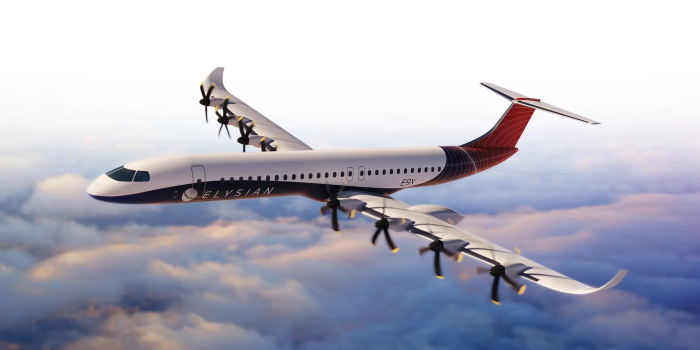A Dutch startup, Elysian, is poised to revolutionize the aviation industry with its ambitious plans for large battery-electric airliners, challenging conventional beliefs that favor hydrogen for such endeavors.
Contrary to widespread skepticism about the feasibility of battery-electric airliners, Elysian is confident in its approach, asserting that it can transport 90 passengers over 800 km (497 miles) using a battery pack with a 360 Wh/kg capacity. The company contends that with recent advancements, particularly from companies like Amprius and CATL, it anticipates achieving a range of 1,000 km (621 miles), enabling its E9X aircraft to cover approximately 50% of all scheduled commercial flights.

Elysian challenges industry norms by referencing TU Delft studies, indicating that the mental block against batteries results from modern airline designs that maximize the efficiency of conventional powertrains. Drawing inspiration from 1960s aircraft design, Elysian’s E9X features a small fuselage and longer wings, with low-mounted wings housing the bulk of the battery mass and the rear landing gear. These design considerations aim to reduce airframe mass and decrease drag by around 15%, boosting the overall range.
The startup asserts that batteries offer superior energy efficiency compared to hydrogen in any form, claiming that battery-electric airliners can cover five times the distance per unit of energy compared to hydrogen or SAF-powered aircraft. Elysian anticipates its E9X to take flight in 2033, supported by a $10 million investment from Panta Holdings.

However, the article injects a dose of skepticism, acknowledging the significant financial challenges and infrastructural complexities associated with bringing such a revolutionary concept to fruition. The hurdles include substantial funding, complex prototyping processes, and establishing robust airport charging infrastructure.
While Elysian faces an uphill battle, the necessity to decarbonize aviation fuels curiosity and interest in the potential success of such audacious ventures.


